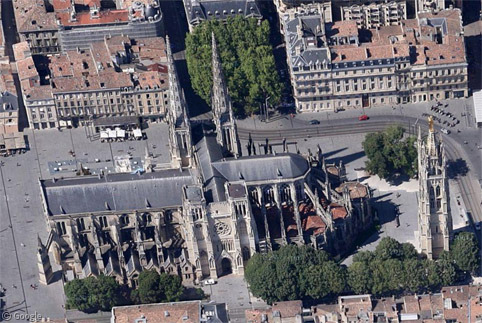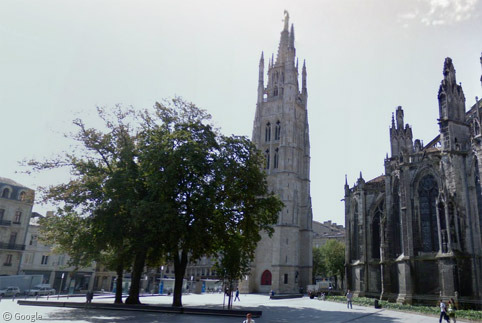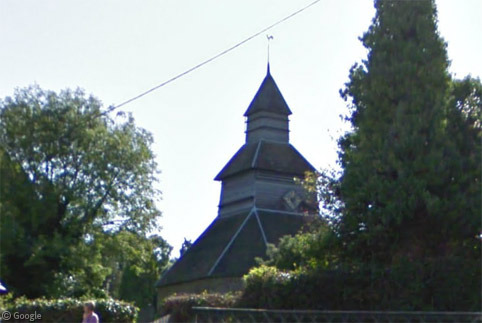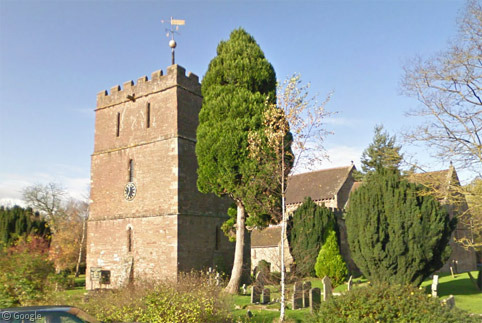Churches With Detached Towers
Thursday, 18th October 2012 by Ian Brown
We recently took a look at a number of Churches with twisted spires. Rather more common are Churches with detached bell towers, though the architectural styles vary wildly. The most famous example is Italy's Torre di Pisa, more commonly known as the Leaning Tower of Pisa.
Construction began on the white marble campanile in 1173, though by the time the second floor was built five years later, the structure had started to sink on one side due to weak soil. 99 years into the project, the builders started to make the floors lop-sided to allow for the lean, so the tower is actually slightly curved. And it was another 100 years after that before bells were finally installed in 1372.
Over the centuries, numerous attempts have been made to stabilise the tower, which at one point reached a 5.5° tilt. It now leans around 4° and engineers claim it will be stable for at least 200 years.
A few kilometres east, the campanile at Florence's Cathedral is considered a masterpiece of gothic architecture, which in Italy often detached the bell tower from the main Church building.
The tower stands almost 85m (278') tall and contains seven bells, and over 400 steps to the outlook at the top. Although it was designed by famed painter and architect Giotto, he died before its completion and his planned spire was never built.
The Street View car passed right by, allowing us a detailed look at the marble work and hexagonal reliefs depicting scenes from the history of humankind, though these are replicas - the originals were moved to a museum a few decades ago. The campanile and Cathedral are part of the Historic Centre of Florence UNESCO World Heritage Site.
Travelling north-east to Venice, we find St. Mark's Campanile a short distance away from the Basilica of the same name. There has been a tower on the site since the 9th century, tough the present design was originally constructed in the 16th century. However the 98m (323') tall tower collapsed in 1902 and was rebuilt ten years later.
The Venetian campanile was modelled after the one in Forlì, a short distance to the south, which was built in the late 12th century.
Detached towers are found in many countries other than Italy. The one I'm personally most familiar with1 is the 15th century Tour Pey-Berland in Bordeaux, France, shown here next to the Cathédrale Saint-André in Google's brand new 45° degree imagery of the city.
One of the historical reasons for building the tower separate was to allow the use of larger bells, the sound waves from which could have damaged the main building. The largest bell in the tower weighs eight tonnes.
Sweden has several Churches with detached towers, including this 13th century wooden structure in Söderköping.
The Cathedral in Lithuania's capital Vilnius also has a detached tower. Part of a larger castle complex, the belfry was built on top of a defensive tower in 16th century.
England has many Churches with detached towers, predominantly in the south of the country. Here are a few examples:
Feock in Cornwall (13th century)
Little Snoring in Norfolk (it may appear to be joined to the main Church building, but that is just the Street View perspective showing the Church entrance behind the tower)
Dereham, also in Norfolk
West Walton, also in Norfolk (13th century, noted for the open arch on each side of the base)
Beccles in Suffolk (16th century; the hill-top location meant the huge tower had to be built away from the usual western end of the Church)
Bramfield, also in Suffolk (the Church is hidden by the trees)
Brookland in Kent (13th century, notable for its similarity to Norway's Stave Churches, which we looked at earlier this year)
Pembridge in Herefordshire (difficult to get a good look from Street View, but also resembles a stave Church)
Bosbury, also in Herefordshire (13th century, has walls almost 2m thick)
Marston Moretaine in Bedfordshire (14th century)
Great Bourton in Oxfordshire (19th century, built into the wall surrounding the Churchyard)
There are countless other Churches around the world with detached towers. Please post in the comments if you know of one near you.
-
I studied at Bordeaux university for a few months. ↩︎
























“Sweden has some” should be “Sweden has many”!
One of the most famous and near me is Frösö kyrka, View Placemark (63.179105,14.520197) http://sv.wikipedia.org/wiki/Fr%C3%B6s%C3%B6_kyrka
Also Ovikens gamla kyrka, View Placemark (62.996866,14.398006) http://sv.wikipedia.org/wiki/Ovikens_gamla_kyrka
Mattmars kyrka, View Placemark (63.304292,13.895729) http://sv.wikipedia.org/wiki/Mattmars_kyrka
The Votive Church and the Dömötör Tower of Szeged, Hungary:
http://hu.wikipedia.org/w/index.php?title=F%C3%A1jl:Fogadalmi_templom_(12498._sz%C3%A1m%C3%BA_m%C5%B1eml%C3%A9k)_18_cropped.jpg&filetimestamp=20120220194711
Wiki: http://en.wikipedia.org/wiki/Votive_Church_of_Szeged
Gmaps: View Placemark (not the best reslution…)
bio
What about the Kaiser Wilhelm Gedächtniskirche in Berlin?
http://en.wikipedia.org/wiki/Kaiser_Wilhelm_Memorial_Church
Chichester Cathedral.
http://en.wikipedia.org/wiki/Chichester_Cathedral
These are all fabulous, thanks for posting them! I particularly love the pillared design of those Swedish ones, so thanks Colin.
Any more?
The Utrecht Dom tower is also missing in this list. Interesting bit of history: the Dom church was designed with the tower connected to the church, but a heavy storm took down part of the church, and in rebuild this part was left out (because of budget constraints), so the tower became detached.
View Placemark (52.090768,5.121775)
A few years ago scaffolding was set up as an art project to show were the missing part of the church would have been and a heavy storm threatened to take down the scaffolding… More information at https://en.wikipedia.org/wiki/Dom_Tower_of_Utrecht